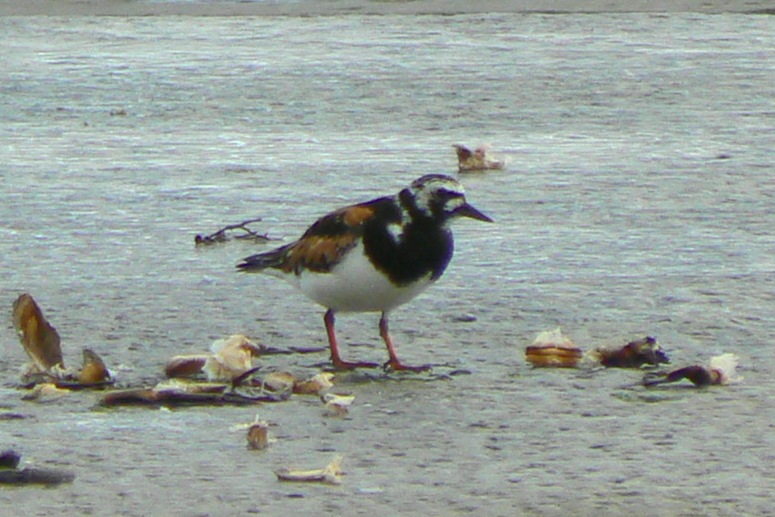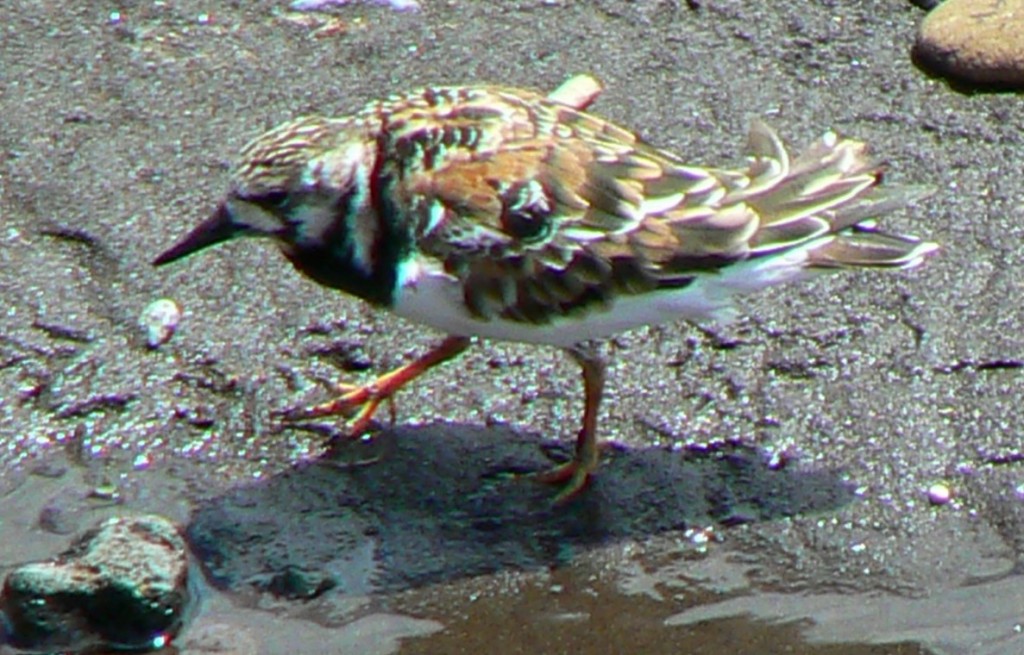
[035] Arenaria interpres, Turnstone
Introduction
Arenaria interpres, the Turnstone, is a small shore bird found worldwide but only in coastal areas. There is another species of Arenaria, the Black Turnstone, found only on the West coast of North America so the more common bird has the more official name of Ruddy Turnstone. In Britain we just call it the Turnstone.
There is not much possibility of confusing this colourful bird with the flowering plants also called Arenaria!
Taxonomy
Kingdom – Animals
Phylum – Chordates
Class – Aves (Birds)
Order – Charadriiformes (Wading birds and gulls)
Family – Scolopacidae (Sandpipers and others)
Genus – Arenaria
Scientific Name – Arenaria interpres
Name
It’s called a Turnstone because it does actually forage on beaches by turning stones over with its bill to see what is underneath.
Arenaria is derived from Latin ‘inhabiting sand’ cognate with arena.
Interpres means interpreter and derives from a misunderstanding. Linnaeus thought that the Swedish ‘Tolk’ meaning interpreter applied to this species – but it was actually a dialect word meaning legs, and it was used for [344] the Redshank.
Description
Arenaria interpres is about the same size as [006] the Common Sandpiper and Green Sandpiper but is much more colourful in its breeding and winter plumages.
In the breeding plumage it is mostly red-brown and black above and pure white below, with orange legs.

The non-breeding plumage is a mottled brown above but still with the white underparts and orange legs.


You may see one with an in-between look.

They are almost always seen by the shoreline and feed mostly on small invertebrates.
Habitat
The map of this bird’s location is unusual. It is more or less a very thin line round the coasts of the World – excluding the far North, the Southern tip of South America and inland seas such as the Mediterranean.
As well as turning stones, they also generally forage around seaweed and peck the surface.


Other Notes
This is a bird often found in small groups.

I have had to resist the temptation to show pictures from around the World. Although it is coastal, it will occasionally venture as far inland as seaside promenades and even roads within a hundred metres of the sea.
See also
There are several other small wading birds like [006] the Sandpiper, which are found throughout wetland habitats but the Turnstone keeps strictly to coasts.

